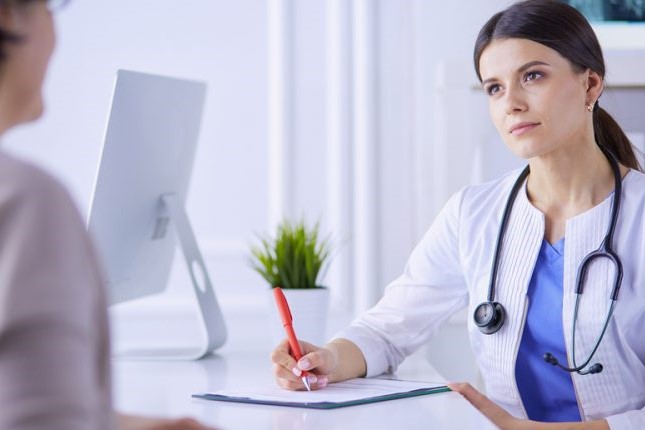
What to eat with endometriosis
Endometriosis is a chronic benign inflammation that affects females of childbearing age and results from an abnormality of cells in the uterine cavity (endometrial cells) that migrate to extra-uterine sites (usually ovaries or pelvic peritoneum)
The course of diagnosis and treatment of this disorder is still debated, but the relevant role of nutrition in terms of containing inflammatory symptoms is now known.
Endometriosis and gastrointestinal disorders
Although endometriosis is a fairly common disorder (10-20% of women of childbearing age develop endometriosis), the condition is often detected by chance, during gynaecological check-ups or tests carried out as part of a course of diagnosis of other disorders.
The inflammation underlying endometriosis tends to manifest itself asymptomatically, but certain painful symptoms can be an alarm bell for the patient.
These include, in particular, severe pain during the menstrual cycle (dysmenorrhoea), which cannot subside even with the use of painkillers and anti-spastics, and pain during sexual intercourse and defecation.
Related to endometriosis, there may also be gastrointestinal problems, which occur particularly during the menstrual cycle and may become chronic, such as
- abdominal bloating
- irritable bowel
- nausea
- constipation
Attention to following an adequate diet, therefore, is particularly important in containing inflammation and the symptoms it causes and can contribute to an improvement in the patient’s quality of life.
The anti-inflammatory diet for people with endometriosis
When we speak of an anti-inflammatory diet, we mean a diet in which food with anti-inflammatory and detoxifying properties is predominantly present.
The Italian Endometriosis Foundation has made available guidelines that can help patients orientate themselves and assess which foods can help curb symptoms, as they interact with certain functions of the body, favouring its processes.
We are therefore talking about foods high in fibre, which promote digestion and intestinal function and lower the blood level of oestrogens, so that oestrogen-dependent tissues, such as the endometrium, remain at rest. Therefore, patients with osteoporosis should increase their fibre consumption by 20-30%.
Also helpful is the intake of omega-3 fatty acids, which feed the production of a molecule that acts against inflammatory processes (prostaglandin PGE1).
In addition to diet, the specialist may also assess the use of supplements to promote the balance of certain components that are fundamental to the body’s wellbeing, including Vitamin D, Omega 6, Nicotinamide, Curcuma, Calcium methylfolate, Quercetin, Parthenium.
Endometriosis: what to eat
In the presence of endometriosis, therefore, make way for fibre-rich foods, such as wholegrain cereals, i.e. wholegrain rice and pasta or potato gnocchi with wholegrain flour, pulses, chickpea, pea or lentil-based pasta, vegetables and fruit (especially prunes, pears and apples).
Foods rich in Omega 3 that should be given plenty of space in your diet include fish (especially salmon, blue fish, fresh tuna, trout, sea bream, sea bass, crustaceans and molluscs), dried fruit (almonds, walnuts and cashews), seeds (pumpkin, flax, sunflower, chia and sesame), extra virgin olive oil, white meat and eggs.
Foods to avoid in case of endometriosis
We have talked about foods that help curb the symptoms of endometriosis, but there are others that risk exacerbating inflammatory processes and should therefore be avoided.
These include:
- all industrial preparations, such as snacks, biscuits or crisps;
- refined bakery products and 00 flour;
- oats and rye (both rich in oestrogen);
- red meat, sausages and cold cuts;
- fresh cheeses rich in lactose;
- sugar;
- soya, chilli peppers;
- alcohol, caffeine and fizzy and sugary drinks.
Other foodstuffs that may also appear from time to time on the tables of endometriosis patients, such as aged cheeses, cottage cheese and natural yoghurt, should be eaten in limited quantities.
Read Also
Emergency Live Even More…Live: Download The New Free App Of Your Newspaper For IOS And Android
Endometriosis Cyst: Symptoms, Diagnosis, Treatment Of Endometrioma
Endometriosis, The Characteristic Symptom Is Pain
Can Endometriosis Cause Infertility?
Cervical Cancer: The Importance Of Prevention
Vulvodynia: What Are The Symptoms And How To Treat It
What Is Vulvodynia? Symptoms, Diagnosis And Treatment: Talk To The Expert
Accumulation Of Fluid In The Peritoneal Cavity: Possible Causes And Symptoms Of Ascites
What’s Causing Your Abdominal Pain And How To Treat It
Pelvic Varicocele: What It Is And How To Recognise The Symptoms
Can Endometriosis Cause Infertility?
Transvaginal Ultrasound: How It Works And Why It Is Important
Candida Albicans And Other Forms Of Vaginitis: Symptoms, Causes And Treatment
What Is Vulvovaginitis? Symptoms, Diagnosis And Treatment
Urinary Tract Infections: Symptoms And Diagnosis Of Cystitis
Cervical Cancer Screening, THINPrep And Pap Test: What Is The Difference?
Diagnostic And Operative Hysteroscopy: When Is It Necessary?
Techniques And Instruments For Performing Hysteroscopy
The Use Of Outpatient Hysteroscopy For Early Diagnosis
Utero-Vaginal Prolapse: What Is The Indicated Treatment?
Pelvic Floor Dysfunction: What It Is And How To Treat It
Pelvic Floor Dysfunction: Risk Factors
Salpingitis: Causes And Complications Of This Fallopian Tube Inflammation
Hysterosalpingography: Preparation And Usefulness Of The Examination
Gynaecological Cancers: What To Know To Prevent Them
Infections Of The Bladder Mucosa: Cystitis
Colposcopy: The Test Of The Vagina And Cervix
Colposcopy: What It Is And What It Is For
Gender Medicine And Women’s Health: Better Care And Prevention For Women
Nausea In Pregnancy: Tips And Strategies
Anorexia Nervosa: What Are The Symptoms, How To Intervene
Colposcopy: How To Prepare, How It Is Performed, When It Is Important
Cystitis: Symptoms, Causes And Remedies
Cystitis, Antibiotics Are Not Always Necessary: We Discover Non-Antibiotic Prophylaxis
Polycystic Ovary Syndrome: Signs, Symptoms And Treatment
Female Cystitis, How To Deal With It: Urological Perspectives
Ovarian Cyst: Symptoms, Cause And Treatment
How Does Cystitis Manifest Itself?
Symptoms, Diagnosis And Treatment Of Cystopyelitis


